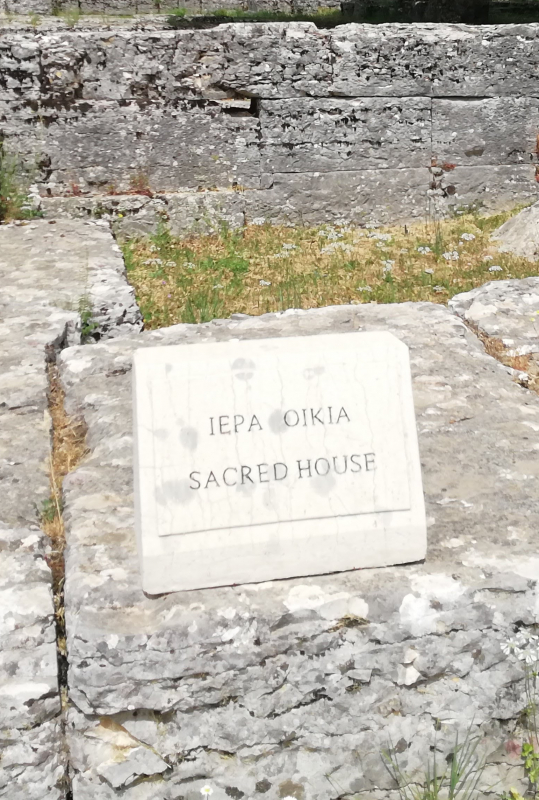The oracle of Dodona was centered on an old sacred oak tree. Initially there may have been a grove of oak trees, but Zeus was believed to reside in one roots of a particular one. Sophocles call it “the oak of many tongues”, since Zeus communicated with mortals through the rustling of the leaves and the sound of the sacred spring near the roots. The Greek sophist Philostratus described the oak as festooned with garlands. The wood of this oak tree was also believed to possess magical qualities. The prow of the “Argo”, the ship on which Jason sailed to retrieve the Golden Fleece, was made from wood cut from this oak by goddess Athena, and had the ability to speak and guide the Argonauts.

7. Sacred Residence
It helps to remember that in Dodona we do not say temple when we refer to the building reserved for Zeus. We call it “the Sacred Residence”. As for the oak tree…well, perhaps it can still answer your questions.
Stories
The oak of many tongues
Speaking cauldrons
In the earliest period the sacred oak was surrounded by three-legged pedestals, each of which supported a bronze cauldron. They were arranged close together to form a fence, leaving only a narrow entry point. The visitor who approached the tree inevitably touched the cauldrons and made a sound that resonated like a gong. The whole row of cauldrons was soon vibrating, and since each cauldron was of different size, each produced a different note. Any gusts of winds that blew into the cauldrons increased the overall impression of moaning and howling. These sounds, the voices of the gods, were interpreted by the oracle priests as the command of the heavens.
The whip of the Corcyraeans
Towards the late 4th century the circle of cauldrons was replaced by a low stone wall. But the voice of the gods was far from silenced; it just changed its medium of deliverance. According to Aristotle, there was now a couple of columns which supported a bronze cauldron and a bronze boy grasping a whip. The bronze lashes of the whip swayed by the wind and struck the cauldron, producing a reverberating sound. The whip was dedicated by the island of Corcyra (Corfu) and consisted of three chains tipped with buttons. It was alleged that you could count four hundred before the echo died away. The “whip of the Corcyraeans” became a synonym for people chatting incessantly.
The booty of war
Initially, the worship of Zeus in Dodona took place out in the open. A plain temple was built in the early 4th century BCE. In 219 BCE the Aetolians, a pastoral tribe in the west of central Greece, invaded Epirus in a marauding expedition and sacked Dodona. They burned down most of the buildings and stole the votive gifts. Only the temple and the sacred oak survived. The following year the Epirotes and the Macedonians invaded the land of the Aetolians and destroyed Thermo, their national shrine. The booty in money and gold was considerable, allowing the Epirotes to rebuild Dodona. The new temple was larger, with a propylon with Ionian columns and a colonnade around the sacred oak.
Powered by Clio Muse Tours